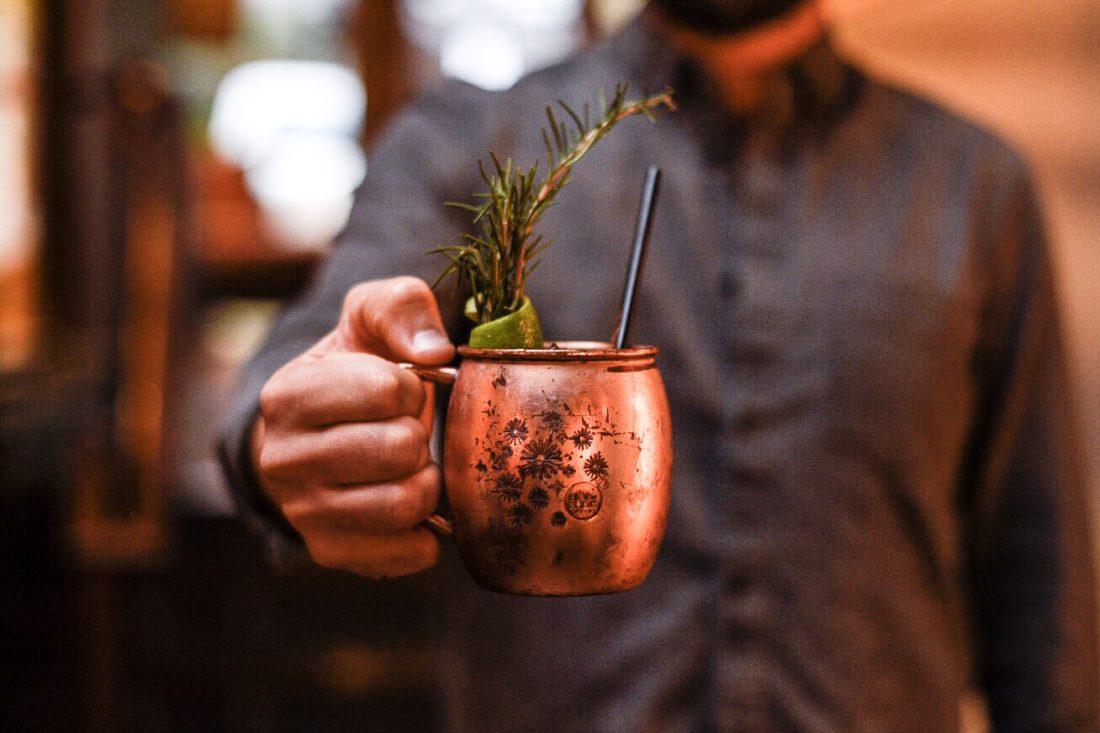Enjoying a cocktail is an experience that lends itself to many situations. One might be having an after-work drink, an aperitif before a restaurant meal, an after-dinner drink to cap off an evening on the town or — as is often the case for us — a cocktail for two, shared at home before making a meal.
But cocktails often form the centerpiece — or a key component — of larger gatherings: dinner with guests, parties with friends and even formal events like wedding receptions. In those cases, it’s worthwhile to consider batch-made cocktails.
Mixing the ingredients for a larger quantity of cocktails ahead of an event can be a complement or an alternative to the self-service approach of setting a few liquor bottles and mixers out on the counter. Batch cocktails can display a host’s creativity, and they also make things more efficient in the process. “At big events, you might have lots of people coming to the bar all at one time,” says Lexie Harvey of event management company Cordial & Craft. “Prebatching the majority of the ingredients can help speed things up.”
Mary Minton of The Crest Center points out that making drinks ahead of time allows the host to spend more time hosting. Focusing on the work involved in premaking the drinks gets it out of the way before the guests arrive. “You don’t want to sacrifice the level of quality that goes into making a cocktail special,” she says.
Harvey also encourages choosing a batch cocktail with ingredients that match the time of year. “Try to think seasonally,” she says. “It will save a lot of money in the long run.” Minton suggests considering the array of other beverages being offered. “You definitely want to take that into consideration,” she says, “so you don’t overproduce.”
In our own entertaining at home, we sometimes take a “sampler” approach, mixing up four different cocktails and providing guests with reduced-size coupes or martini glasses. That way, they get the experience of trying four showcase cocktails over the course of an evening, while consuming the equivalent of just two mixed drinks. And even when the cocktails aren’t the focus of the evening, hosts can apply the batch approach, premaking two types of mixed drinks so guests can choose according to their tastes.
Entertaining with batch cocktails need not be an expensive proposition. “The first question you might ask yourself is ‘What do I have in my house that I can use?’” says Harvey. “It’s fun to play with what you have on hand already.”
Minton and Harvey agree that using well-brand, or “bottom shelf,” spirits isn’t a good idea. “You can tell the difference,” Harvey says. “There are little subtleties that you get from, say, a nice bourbon versus a well brand,” says Minton. Both encourage use of locally made spirits. “And if you’re at a party, that’s another talking point,” Harvey adds.
Often the simplest batch approach is to mix a rocks-based drink. That way, guests need only put some ice in an Old Fashioned glass, pour from a pitcher, add the appropriate garnish and give the finished drink a quick stir. Martini-style drinks that involve shaking are, by definition, more involved. And then there’s the question of what to do with the spent ice.
Harvey notes that while most any base liquor can be used in a batch cocktail, vodka- and bourbon-based drinks are popular. A tequila-based batch cocktail, on the other hand, “might surprise people,” she says. “You want the cocktail to be palatable to everybody.”
A creative way to extend a premixed drink is to add prosecco or cava, she says. “But be sure to wait until right before serving to add anything bubbly.” Minton advises waiting until about an hour before serving to add any fruit juices as well. “They can add that hint of flavor that’s so important,” she says. “You don’t want the flavors to become muddled.”
Adding a homemade flavored syrup — a topic we’ll explore in an upcoming column — can also give premade cocktails a distinctive character. “They can add a little bit of an edge to a recipe that you already know works well,” says Minton. Milk or cream, a key ingredient of classic after-dinner drinks like the brandy Alexander, can work in relatively small quantities, but dairy should be added as close to serving time as possible. And when asked what ingredient should be avoided in batch cocktails, Minton and Harvey immediately give the same response: eggs.
The wide array of available base spirits, liqueurs and juices provide myriad options for anyone wanting to prepare batched cocktails for a stylish event. “I think it’s really important to practice beforehand,” Minton says. “You don’t want a lot of anxiety about getting something right.” And she agrees with Harvey’s advice: “Make it fun.”




Before you comment
The comments section is here to provide a platform for civil dialogue on the issues we face together as a local community. Xpress is committed to offering this platform for all voices, but when the tone of the discussion gets nasty or strays off topic, we believe many people choose not to participate. Xpress editors are determined to moderate comments to ensure a constructive interchange is maintained. All comments judged not to be in keeping with the spirit of civil discourse will be removed and repeat violators will be banned. See here for our terms of service. Thank you for being part of this effort to promote respectful discussion.